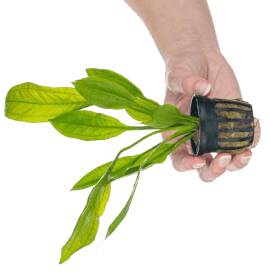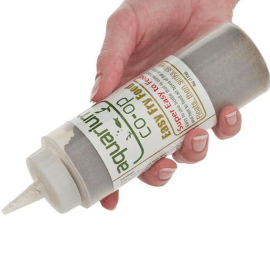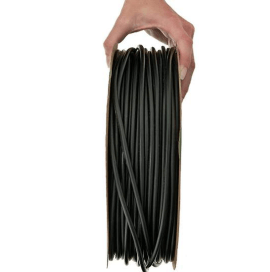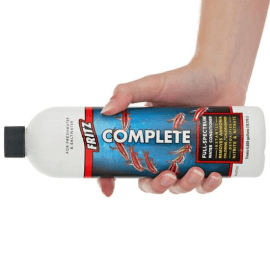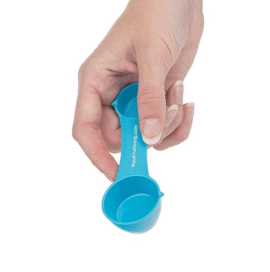Which Planted Tank Fertilizer Is Right for You?
Ever wonder how professionals and even advanced hobbyists make those gorgeous aquascapes bursting with plant life? It all comes down to having the three essentials that make aquatic plants happy:
- Good lighting
- Substrate as needed
- Nutrients, like fertilizers
Many beginners will ignore that last piece of the puzzle because the world of fertilizers seems like a complicated hot mess. Everyone on the internet is pushing for dry fertilizers because they’re cost-effective and highly customizable, but they fail to mention the extremely steep learning curve and how easily chemical balances can get out of whack if you don’t know what you’re doing.
So Do Aquatic Plants Really Need Fertilizers?
If you want your plants to really thrive and not just survive, the simple answer is yes. Just as humans require certain nutrients to live, plants must have fundamental building blocks to grow:
- Macronutrients are nutrients that plants consume in large quantities, such as nitrogen, phosphorous, and potassium.
- Micronutrients are nutrients that plants need in trace amounts, such as iron, boron, and manganese.
If any one of these compounds is lacking, plants start growing differently or not at all. Check out this plant deficiency diagram that shows what happens when certain elements or minerals are missing:

Aquarium Co-Op plant nutrient deficiency chart
To avoid these problems, hobbyists use fertilizers to make sure their plants always have access to all the nutrients they’ll need. So let’s take a look at some of the most popular, readily available fertilizers that will work for your average planted tank.
The Easy Option: Aquarium Co-Op Easy Green
You may be thinking, “Uh, I just bought my first few plants. I have no idea if they’re doing well, much less what nutrients they might be missing. Where’s the easy button?” That’s where Aquarium Co-Op’s Easy Green all-in-one fertilizer comes in. We originally developed it for our own in-store use because we wanted something that was:
- Easy to use, without having to measure out a ton of different supplements
- Higher in nutrient concentration and way more potent than what was available on the market
- Reasonably priced, because a little goes a long way

Easy Green all-in-one liquid fertilizer
Intended For: aquariums that are at least moderately stocked with plants
Easy Green contains healthy amounts of all three macronutrients to get great growth, so it’s not intended for tanks with very high bioloads and only one plant. If you have an aquarium with normal bioloads and a bunch of plants that you want to look nice, this is the fertilizer for you. And yup, it’s fish and invertebrate safe.
Note: “High bioload” generally refers to aquariums with lots of animals, poop, and excess food floating around. Having high levels of organics in the water produces nitrogen and phosphorus, which plants can consume. However, if not managed properly, high bioloads can also produce a lot of ammonia, which is toxic to animals.
Ingredients: all three macronutrients (nitrogen, phosphorus, potassium) and the top six micronutrients – in higher concentrations for maximum effectiveness
Cost: $20 for 16.9 oz bottle
Easy Green is an all-in-one fertilizer that covers all your bases for the majority of plants, so if you’re only going to buy one fertilizer, get this one. (Also, we now offer Easy Green in Canada through Amazon.com.) If you have lots of red plants, you can dose extra iron with Easy Iron. If you have tons of java fern and anubias, you can add extra potassium with Easy Potassium. And that’s it – no other bottles to deal with.
If you have plants that prefer to feed from their roots rather than the water column (such as Cryptocoryne, sword plants, and bulb plants), then get a pack of Easy Root Tabs to stick into your gravel, sand, or other inert substrate.

Easy Green Fertilizer
Directions: 1 pump per 10 gallons of water once a week for low to medium light tanks (and double the dose for medium to high light tanks)
For a 55 gallon low light tank, that means one bottle will last you about a year. If your aquarium has medium to high light, then dose two to three times a week. The key is to use a test strips to measure your tank water and aim for 50 ppm of nitrates. It’s as simple as that.
Bottom Line: It’s called “Easy Green” because it’s easy to use and great at making green leaves. If you’re a beginner looking for a comprehensive, bulletproof fertilizer or you’re not getting the results you want, Easy Green may be just the thing you need.
The Cheap Option: API Leaf Zone
If you go to your local pet store and find their selection of liquid fertilizers, most likely API Leaf Zone will be one of the options. It’s cheapest bottle on the shelf and should do the trick, right?

API Leaf Zone
Intended For: low-tech planted tanks with really high bioloads
Translation: your plants are fairly low maintenance and are currently living off fish waste and flakes in the tank.
Ingredients: contains only potassium and iron
Because API assumes that you have a high-bioload tank with a ton of nitrogen and phosphorus, the only macronutrient you’re missing is potassium, which Leaf Zone provides. It also throws in some iron because it helps with new leaf growth. But… where are all the other micronutrients?
Cost: $7.20 for 8 oz bottle
Can’t beat the price, but you get what you pay for.
Directions: 5 mL per 10 gallons per week
That’s pretty diluted, so you’re going to run through the bottle pretty quickly.
Bottom Line: It won’t provide super growth for your plants, but it’s better than nothing.
The Mix-and-Match Option: Seachem Flourish Series

Seachem Flourish fertilizer line
Intended For: any planted tank
The reason why Seachem has so many supplements is because everyone’s planted tank is unique – different bioloads, water hardness, low vs. high light, and so on. Seachem wants you to have the ability to completely customize the nutrients to fit your specific requirements… which means their fertilizers aren’t necessarily beginner-friendly.
Ingredients: totally depends Most novices should start with Flourish Comprehensive, which contains most of the elements and minerals you’ll need for low-light plants. Seachem then recommends adding Flourish Trace on separate days to ensure you have an ample amount of micronutrients. If you’re still seeing plant deficiencies, Seachem has separated out key nutrients into different products so that you can individually buy the building blocks you require.
Cost: $10 to $70 or more
Flourish Comprehensive and Flourish Trace are about $10.50 each for a 16.9 oz bottle. However, like API Leaf Zone, they’re very low on the two of the main macronutrients – nitrogen and phosphorus – just in case you have a high bioload tank. If you don’t, then you can spend another $10.50 on Flourish Nitrogen and another $10.50 on Flourish Phosphorus… by the time you’re done adding all the necessary nutrients, you may be buying a lineup of seven bottles or more.
Directions: totally depends
Not only is it a hassle to deal with multiple bottles, but each of them have very different measurement amounts and treatment frequencies. Sometimes it says “5 ml per 60 gallons per week” and other times it’s “2.5 ml per 40 gallons twice a week but add more if needed.” Also, the nutrient concentrations are fairly low to keep beginners from overdosing, so more often than not, your plants will require much more fertilizer than the bottle recommends.
Bottom Line: Flourish Comprehensive contains a lot of the bare minimum nutrients needed for growing plants, but be prepared to buy additional supplements and to spend time fine-tuning your dosing schedule and amounts.
For more details on the Seachem Flourish series, check out our video on How to Use Aquarium Fertilizers.
Final Tips for Aquatic Plant Fertilizers
No matter what nutrient sources you use (e.g., fish poop, root tabs, liquid or dry fertilizers, potting soil, CO2 injection), most likely they will help. There is no single “best product” on the market because everyone’s individual setups and preferences are so different. The key is to do your research, make a decision that works best for you, and learn from your mistakes. Your aquarium is a living ecosystem that is constantly changing – water, number of fish, plant size – so have fun seeing nature in action and earning your aquatic green thumb!
